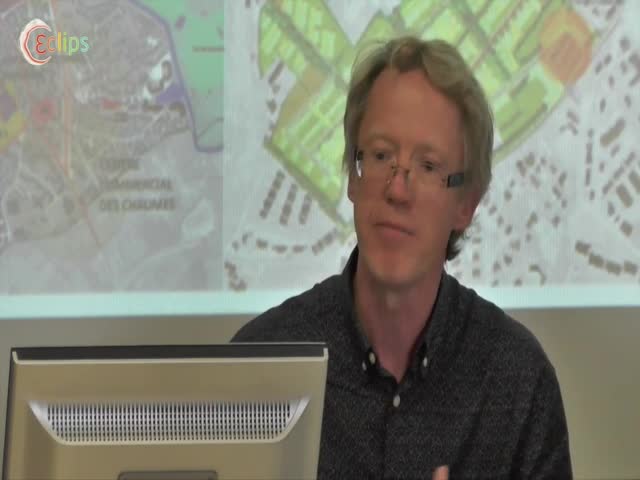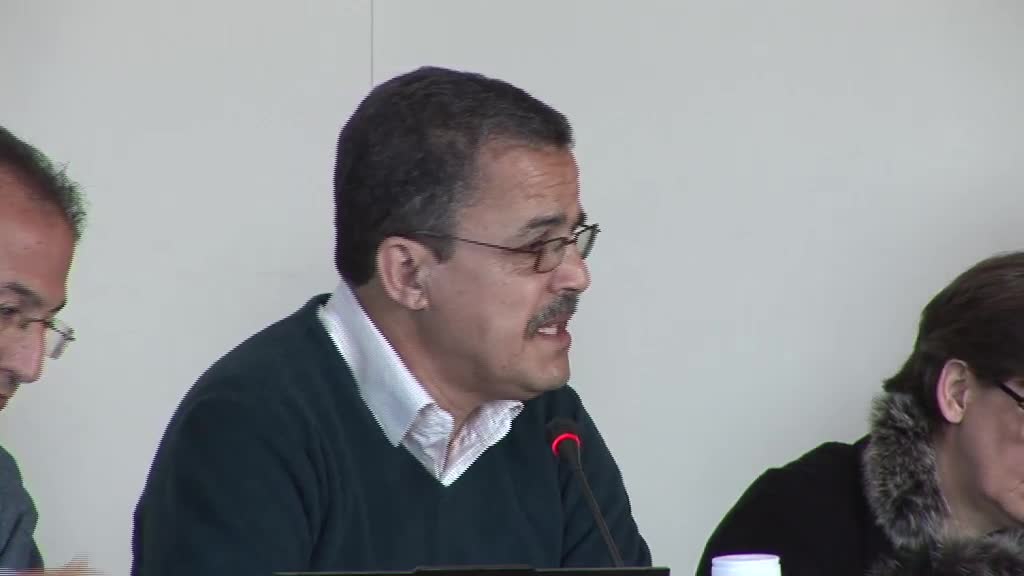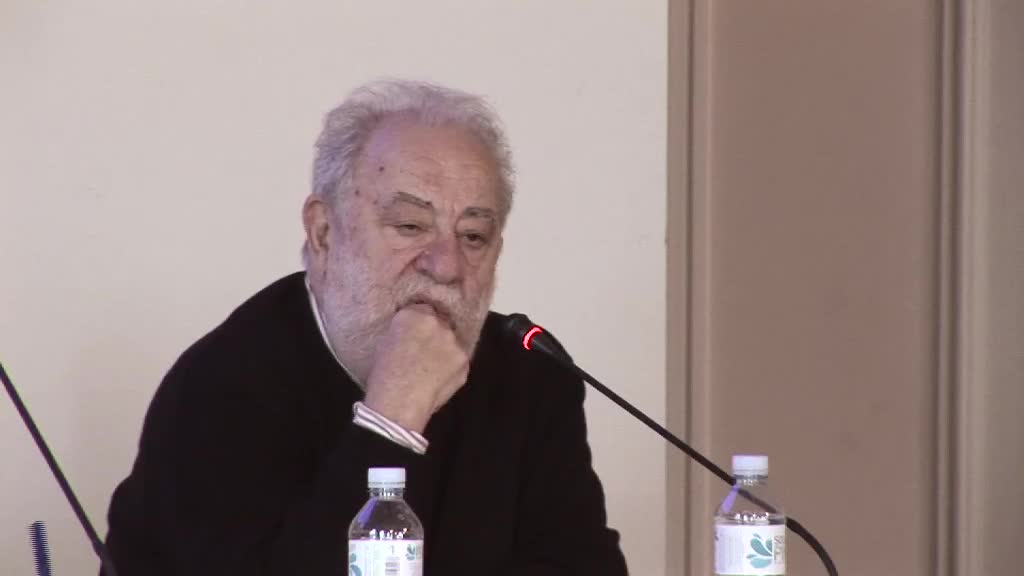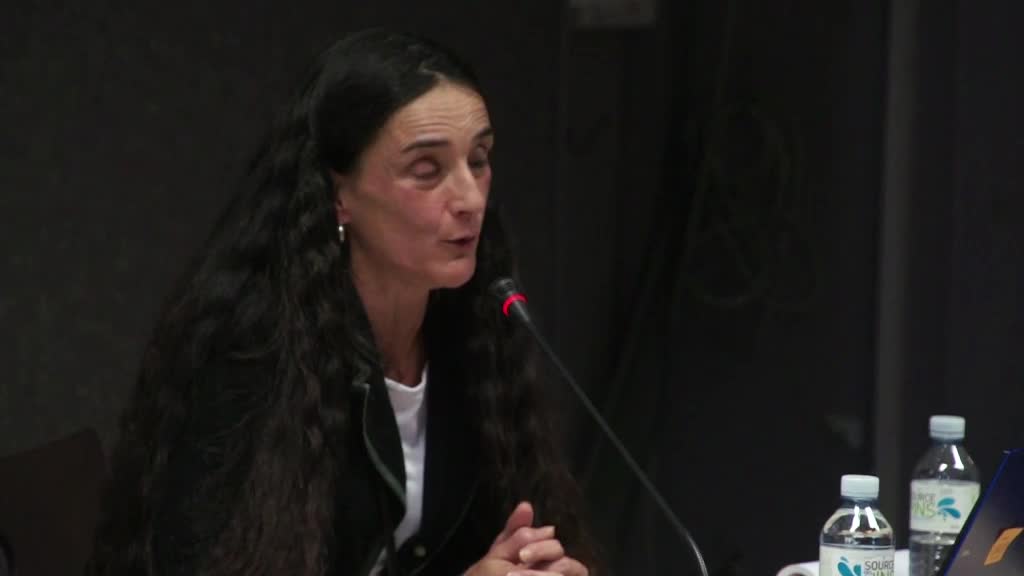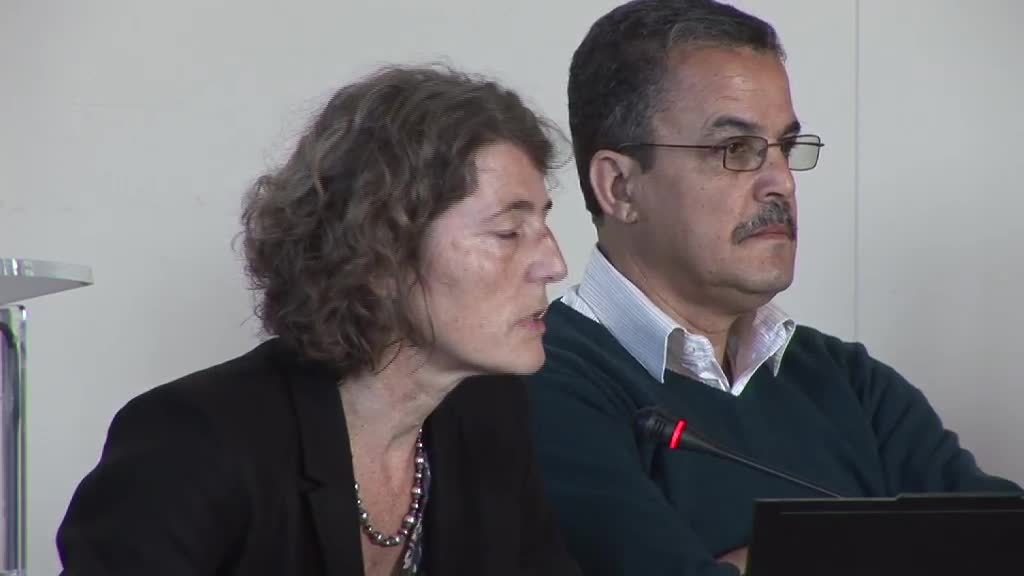Notice
05 - "Le hérisson animal de la forêt qui n'y habite peut-être plus" : Nicolas Messieux (Chercheur indépendant)
- document 1 document 2 document 3
- niveau 1 niveau 2 niveau 3
Descriptif
COLLOQUE « HABITATS FORESTIERS ET FORÊTS HABITÉES » COMMENT USAGES, GESTIONS ET PRATIQUES SOCIALES INTERAGISSENT AVEC LA FAUNE SAUVAGE EN FORÊT ?"
Ce colloque international, qui s'est tenu au sein du Domaine national de Chambord (26 et 27 mars 2019), s'inscrit dans le cadre du projet de recherche COSTAUD (Contribution des OnguléS au foncTionnement de l’écosystème et AUx services rendus à ChamborD, financé par la Région Centre-Val de Loire et porté par l'Irstea, 2016-2019).
Toutes les informations sur le colloque : https://living-forests.sciencesconf.org/
Le colloque "Habitats forestiers et forêts habitées" a abordé la forêt, part de l'imaginaire et des paysages, comme lieu d’interactions entre l’homme et la faune sauvage.
Il a été l'occasion de réfléchir à l’empreinte passée de nos activités, aux déterminants actuels et leurs enjeux, ainsi qu’aux perspectives d’évolution des forêts et des habitats qui les composent.
Pour y parvenir ont été privilégiées les approches pluridisciplinaires tenant compte de l’écologie de la faune sauvage et des forêts, de leurs représentations sociales et de la fréquentation touristique associée à ces patrimoines naturel et culturel.
Session "Facteurs environnementaux et humains à l’origine des populations animales actuelles"
"Le hérisson animal de la forêt qui n'y habite peut-être plus" : Nicolas Messieux (Chercheur indépendant)
Résumé de l'intervention :
<div>
Tradition links European hedgehogs (Erinaceus sp.) to trees. They have been said to carry tree fruits on their quills (Pliny, Physiologos) and modern figurines show them holding/carrying mushrooms or leaves. Moreover, tales, folklore, children's literature, and mainstream books clearly present the hedgehog as a forest animal
Studies about hedgehogs' ecology consistently show contradictory results about whether they like forested areas or not. They are difficult to spot in tree-covered areas, leading to a sur-representation of country- or peri-urban-found individuals in studies. Numerous hard-to-isolate characteristics (density, paths, clearings, deciduous/non-, undergrowth) also explain variations. Geographical distribution of hedgehogs nevertheless follows that of forests (Morris & Berthoud). The latter thinks that they mainly hibernate in woodland.
Our anthropological researches show that hedgehog carers and enthusiasts consider forests as being this animal's original habitat and “lost paradise”. They often release rescued hedgehogs at the edge of the forest, so that they can disappear (almost morph) into its original environment. They explain that forests have been replaced by hedges and orchards, which are being destroyed by urbanization. Suburban gardens therefore became hedgehogs' last haven.
Our examination of contemporary children's stories shows that a frequent theme is a hedgehog exploring, leaving and/or returning to the forest. By leaving “home”, breaking its own immobility and challenging natural cycles (seasons, sleep), a hedgehog puts itself in danger. But, by doing this, it becomes wiser, more cultured or finds a new ideal place (usually a garden) to live.
All these somewhat contradicting points could be united within one hypothesis. Tales, folklore and children's stories could be an ethnohistorical record of hedgehogs' past life as a forest animal. That the hedgehog historically took refuge in woods (the carers point of view) would have been to escape hunting and/or human destruction – like other forest animals are said to have done. But, it has now become safe(r) to live in man-controlled areas, as displayed in contemporary children stories and evidenced by the high densities of hedgehogs found in peri-urban areas by scientific studies. Going out of the forest, hedgehogs would be establishing a new true commensal “civilised” relationship with humans.
Dans la même collection
-
23 - "Les Vosges et sa faune sauvage. Une histoire complexe" : Annik Schnitzler et al. (Université …
COLLOQUE « HABITATS FORESTIERS ET FORÊTS HABITÉES » COMMENT USAGES, GESTIONS ET PRATIQUES SOCIALES INTERAGISSENT AVEC LA FAUNE SAUVAGE EN FORÊT ?" Ce colloque international, qui s'est tenu
-
15 - "Effondrement de la biodiversité et avenir des forêts feuillues d'Amérique du Nord" : Walt Car…
Ce colloque international, qui s'est tenu au sein du Domaine national de Chambord (26 et 27 mars 2019), s'inscrit dans le cadre du projet de recherche COSTAUD (Contribution des OnguléS au
-
07 - "Les grands carnivores en France : Éléments des écosystèmes forestiers, enjeux de société" : F…
Ce colloque international, qui s'est tenu au sein du Domaine national de Chambord (26 et 27 mars 2019), s'inscrit dans le cadre du projet de recherche COSTAUD (Contribution des OnguléS au
-
28 - "Effets directs et indirects des ongulés sur l'échec de la nidification des oiseaux forestiers…
Ce colloque international, qui s'est tenu au sein du Domaine national de Chambord (26 et 27 mars 2019), s'inscrit dans le cadre du projet de recherche COSTAUD (Contribution des OnguléS au
-
20-"Différences de provenance et d'espèces dans la résilience des jeunes arbres au givre et au brou…
Ce colloque international, qui s'est tenu au sein du Domaine national de Chambord (26 et 27 mars 2019), s'inscrit dans le cadre du projet de recherche COSTAUD (Contribution des OnguléS au
-
12 - "Le castor et le peuplier : quand une espèce protégée menace la "forêt"... Disservices mis en …
COLLOQUE « HABITATS FORESTIERS ET FORÊTS HABITÉES » COMMENT USAGES, GESTIONS ET PRATIQUES SOCIALES INTERAGISSENT AVEC LA FAUNE SAUVAGE EN FORÊT ?" Ce colloque international, qui s'est tenu au
-
03 - "La chasse en Wallonie : Poison ou remède ?" : Alix Hubert (Université de Liège)
Ce colloque international, qui s'est tenu au sein du Domaine national de Chambord (26 et 27 mars 2019), s'inscrit dans le cadre du projet de recherche COSTAUD (Contribution des OnguléS au
-
25- "Les animaux du château. Le tourisme de nature à Chambord" : Jean-Louis Yengué (Université de P…
Ce colloque international, qui s'est tenu au sein du Domaine national de Chambord (26 et 27 mars 2019), s'inscrit dans le cadre du projet de recherche COSTAUD (Contribution des OnguléS au
-
17 - "Gouvernance des forêts et impact de la création des parcs nationaux sur la faune sauvage au G…
Kombila-MoulounguiAubin GildasNdong NdongSaturninColloque « Habitats forestiers et forêts habitées » - Comment usages, gestions et pratiques sociales interagissent avec la faune sauvage en forêt ?
-
09 - "Mise en discussion de la notion de services écosystèmiques culturels appliquée à la forêt de …
Ce colloque international, qui s'est tenu au sein du Domaine national de Chambord (26 et 27 mars 2019), s'inscrit dans le cadre du projet de recherche COSTAUD (Contribution des OnguléS au
-
22 - "L'ours brun, bouc émissaire des usagers de la montagne" : Françoise Saliou (Chercheuse indépe…
SaliouFrançoiseCOLLOQUE « HABITATS FORESTIERS ET FORÊTS HABITÉES » COMMENT USAGES, GESTIONS ET PRATIQUES SOCIALES INTERAGISSENT AVEC LA FAUNE SAUVAGE EN FORÊT ?" Ce colloque international, qui s'est tenu
-
14 - "L'animal, facteur de paysage : agro-sylvo-pastoralisme dans le Morvan et à Sumatra" : Jean-Ba…
Ce colloque international, qui s'est tenu au sein du Domaine national de Chambord (26 et 27 mars 2019), s'inscrit dans le cadre du projet de recherche COSTAUD (Contribution des OnguléS au
Sur le même thème
-
12 - "L’habitat participatif dans le montage de projets urbains. La maîtrise d’ouvrage urbaine face…
FenkerMichaelZetlaouiJodelleLe développement, depuis les années 90 en France, des conseils de quartiers, réunions de concertation ou autres assemblées consultatives, témoigne de la volonté des élus et des acteurs de la ville d
-
13 - Atelier 2.4 "Participer et mutualiser : un bien commun ?"
CariouEmilieJanPierre-YvesColloque de clôture du Programme de recherche bi-disciplinaire (Sociologie et Droit), financé par l’Agence Nationale de la Recherche (Espace et territoire 2010), ALTER-PROP « Partages des espaces
-
12 - Atelier 2.3 "La gouvernance communautaire de l'habitat comme alternative solidaire et durable …
PlichonRomainColloque de clôture du Programme de recherche bi-disciplinaire (Sociologie et Droit), financé par l’Agence Nationale de la Recherche (Espace et territoire 2010), ALTER-PROP « Partages des espaces
-
19 - Atelier 4.2 "Logements, propriété etpolitiques publiques : l'expérience algérienne"
Colloque de clôture du Programme de recherche bi-disciplinaire (Sociologie et Droit), financé par l’Agence Nationale de la Recherche (Espace et territoire 2010), ALTER-PROP « Partages des espaces
-
25 - Atelier 5.4 "L'habitat durable : une mise en oeuvre du développement durable"
SabatierAnne-LouiseColloque de clôture du Programme de recherche bi-disciplinaire (Sociologie et Droit), financé par l’Agence Nationale de la Recherche (Espace et territoire 2010), ALTER-PROP « Partages des espaces
-
27 - Plénière "Les alternatives d'habitat dans le monde. Perspectives juridiques, urbanistiques et …
MassiahGustaveColloque de clôture du Programme de recherche bi-disciplinaire (Sociologie et Droit), financé par l’Agence Nationale de la Recherche (Espace et territoire 2010), ALTER-PROP « Partages des espaces
-
26 - Atelier 5.5 "Là où la gestion en communs des terres et des habitats contribue au développement…
SaïdMahamoudouColloque de clôture du Programme de recherche bi-disciplinaire (Sociologie et Droit), financé par l’Agence Nationale de la Recherche (Espace et territoire 2010), ALTER-PROP « Partages des espaces
-
24 - Atelier 5.3 "L'élaboration participative de l'éco-quartier social 'La Grand'Terre' : tous prop…
MésiniBéatriceColloque de clôture du Programme de recherche bi-disciplinaire (Sociologie et Droit), financé par l’Agence Nationale de la Recherche (Espace et territoire 2010), ALTER-PROP « Partages des espaces
-
23 - Atelier 5.2 "L'écologie dans des projets d'habitat participatif : des controverses expérimenta…
Debarre-BlanchardAnneColloque de clôture du Programme de recherche bi-disciplinaire (Sociologie et Droit), financé par l’Agence Nationale de la Recherche (Espace et territoire 2010), ALTER-PROP « Partages des espaces
-
22 - Atelier 5.1 "Innovation et complexité : l'autopromotion pour un habitat groupé en Languedoc-Ro…
Parat-BézardPascaleColloque de clôture du Programme de recherche bi-disciplinaire (Sociologie et Droit), financé par l’Agence Nationale de la Recherche (Espace et territoire 2010), ALTER-PROP « Partages des espaces
-
21 - Atelier 4.4 "L'habitat participatif en France : évolution du contexte juridique"
CariouEmilieColloque de clôture du Programme de recherche bi-disciplinaire (Sociologie et Droit), financé par l’Agence Nationale de la Recherche (Espace et territoire 2010), ALTER-PROP « Partages des espaces
-
18 - Atelier 4.1 "Les coopératives de logement en Pologne. Quand l'habitat coopératif était la norm…
Coudroy de LilleLydiaColloque de clôture du Programme de recherche bi-disciplinaire (Sociologie et Droit), financé par l’Agence Nationale de la Recherche (Espace et territoire 2010), ALTER-PROP « Partages des espaces














